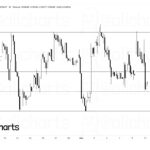
(Trouble with a capital "T" and that rhymes with "D" and that stands for ... oh you know what it stands for. -AM)
Via Some Assembly Required
RAW STORY
BY DANIEL TENCER
Published: August 15, 2009
The wealthiest 10 percent of Americans now have a larger share of total income than they ever have in records going back nearly a century — an even larger amount than during the Roaring Twenties, the last time the US saw such similar disparities in wealth.
In recent years, the fact that differences between rich and poor are the greatest they’ve been since the Great Depression has become a popular talking point among liberal-leaning economists.
But an updated study from University of California-Berkeley economist Emanuel Saez shows that, in 2007, the wealth disparity grew to its highest number on record, based on US tax data going back to 1917.
According to Saez’s study, which Nobel prize-winning economist Paul Krugman drew attention to at his New York Times blog, the top 10 percent of earners in America now receive nearly 50 percent of all the income earned in the United States, a higher percentage than they did during the 1920s.
“After decades of stability in the post-war period, the top decile share has increased dramatically over the last twenty-five years and has now regained its pre-war level,” Saez writes. “Indeed, the top decile share in 2007 is equal to 49.7 percent, a level higher than any other year since [records began in] 1917 and even surpasses 1928, the peak of stock market bubble in the ‘roaring’ 1920s.”
The contrast is even starker for the super-rich. The top 0.01 percent of earners in the US are now taking home six percent of all the income, higher than the 1920s peak of five percent, and a whopping six-fold increase since the start of the Reagan administration, when the top 0.01 percent earned one percent of all the income.
There is no consensus among economists on whether large disparities in income lead to economic disruption, but it is hard to ignore the correlation between rising income inequality and the onset of economic crisis. The last time the US saw similar differences in income was in 1928 and 1929, just before the start of the Great Depression.
The economic crisis that has taken hold over the past year isn’t over, and the world could in fact see two more recessions before the crisis is finally over, says the chief economist of Germany’s influential Deutsche Bank.
Norbert Walter told CNBC that investors are worried about the health of the US dollar, and many countries are facing difficult financial problems because of overspending by governments on bailouts and stimulus. Those things combined could push the world economy downwards not once but two more times in the near future, he said.
“I believe that the rescue packages brought on have been so costly for so many governments that the exit from this fiscal policy will be very painful, very painful indeed,” he said. “Some of us are already talking about a W-shaped recovery. I’d probably talk about a triple-U-shaped recovery because there are so many stumbling blocks here to get out of this.”
“The world is in trouble,” Walter told CNBC.




No comments:
Post a Comment